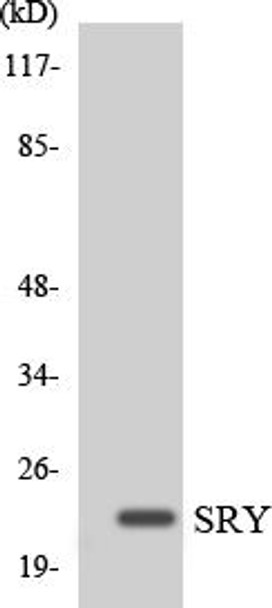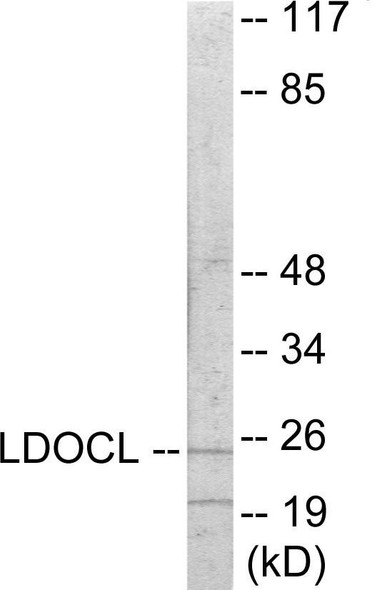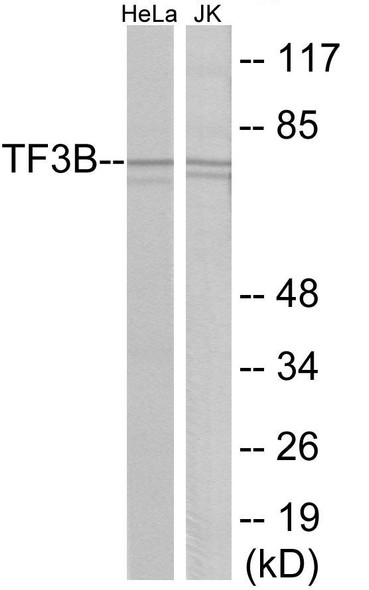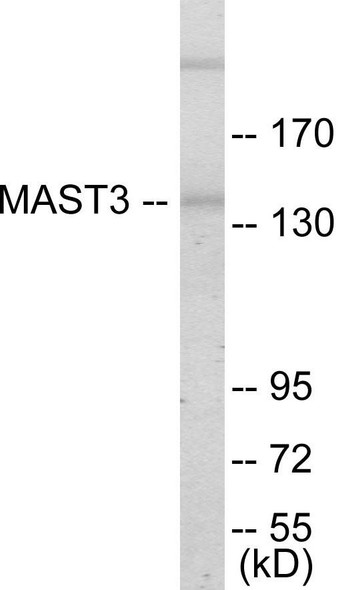SRY Colorimetric Cell-Based ELISA
- SKU:
- CBCAB01067
- Product Type:
- ELISA Kit
- ELISA Type:
- Cell Based
- Research Area:
- Developmental Biology
- Reactivity:
- Human
- Detection Method:
- Colorimetric
Description
SRY Colorimetric Cell-Based ELISA
The SRY Colorimetric Cell-Based ELISA Kit is a cutting-edge tool designed for the quantitative detection of SRY (sex-determining region Y) protein levels in cell lysates and tissue homogenates. With its high sensitivity and specificity, this kit provides accurate and reliable results, making it an essential asset for researchers studying sex determination and development.SRY is a critical gene that plays a pivotal role in male sex determination and gonadal development. Mutations in the SRY gene can lead to disorders of sex development (DSD), making it a crucial target for research in reproductive biology and genetic disorders.
This innovative ELISA kit offers a simple and efficient way to measure SRY protein levels, allowing researchers to explore the molecular mechanisms underlying sex differentiation and identify potential therapeutic targets for DSD and related conditions. With its ease of use and robust performance, the SRY Colorimetric Cell-Based ELISA Kit is the perfect choice for advancing scientific discoveries in the field of developmental biology.
| Product Name: | SRY Colorimetric Cell-Based ELISA |
| Product Code: | CBCAB01067 |
| ELISA Type: | Cell-Based |
| Target: | SRY |
| Reactivity: | Human |
| Dynamic Range: | > 5000 Cells |
| Detection Method: | Colorimetric 450 nmStorage/Stability:4°C/6 Months |
| Format: | 96-Well Microplate |
The SRY Colorimetric Cell-Based ELISA Kit is a convenient, lysate-free, high throughput and sensitive assay kit that can detect SRY protein expression profile in cells. The kit can be used for measuring the relative amounts of SRY in cultured cells as well as screening for the effects that various treatments, inhibitors (ie siRNA or chemicals), or activators have on SRY.
Qualitative determination of SRY concentration is achieved by an indirect ELISA format. In essence, SRY is captured by SRY-specific primary antibodies while the HRP-conjugated secondary antibodies bind the Fc region of the primary antibody. Through this binding, the HRP enzyme conjugated to the secondary antibody can catalyze a colorimetric reaction upon substrate addition. Due to the qualitative nature of the Cell-Based ELISA, multiple normalization methods are needed:
| 1. | A monoclonal antibody specific for human GAPDH is included to serve as an internal positive control in normalizing the target absorbance values. |
| 2. | Following the colorimetric measurement of HRP activity via substrate addition, the Crystal Violet whole-cell staining method may be used to determine cell density. After staining, the results can be analysed by normalizing the absorbance values to cell amounts, by which the plating difference can be adjusted. |
| Database Information: | Gene ID: 6736, UniProt ID: Q05066, OMIM: 480000, Unigene: Hs.1992 |
| Gene Symbol: | SRY |
| Sub Type: | None |
| UniProt Protein Function: | SRY: Transcriptional regulator that controls a genetic switch in male development. It is necessary and sufficient for initiating male sex determination by directing the development of supporting cell precursors (pre-Sertoli cells) as Sertoli rather than granulosa cells. In male adult brain involved in the maintenance of motor functions of dopaminergic neurons. Involved in different aspects of gene regulation including promoter activation or repression. Promotes DNA bending. SRY HMG box recognizes DNA by partial intercalation in the minor groove. Also involved in pre-mRNA splicing. Binds to the DNA consensus sequence 5'-[AT]AACAA[AT]-3'. Defects in SRY are the cause of 46,XY sex reversal type 1 (SRXY1). A condition characterized by male-to-female sex reversal in the presence of a normal 46,XY karyotype. Patients manifest rapid and early degeneration of their gonads, which are present in the adult as 'streak gonads', consisting mainly of fibrous tissue and variable amounts of ovarian stroma. As a result these patients do not develop secondary sexual characteristics at puberty. The external genitalia in these subjects are completely female, and Muellerian structures are normal. A 45,X chromosomal aberration involving SRY is found in Turner syndrome, a disease characterized by gonadal dysgenesis with short stature, streak gonads, variable abnormalities such as webbing of the neck, cubitus valgus, cardiac defects, low posterior hair line. The phenotype is female. Defects in SRY are the cause of 46,XX sex reversal type 1 (SRXX1). A condition in which male gonads develop in a genetic female (female to male sex reversal). Belongs to the SRY family. |
| UniProt Protein Details: | Protein type:Nuclear receptor co-regulator; DNA-binding Chromosomal Location of Human Ortholog: Yp11.3 Cellular Component: nucleoplasm; nucleus Molecular Function:DNA binding; RNA polymerase II transcription factor activity, enhancer binding; transcription factor binding Biological Process: positive regulation of transcription, DNA-dependent Disease: 46,xx Sex Reversal 1; 46,xy Sex Reversal 1 |
| NCBI Summary: | This intronless gene encodes a transcription factor that is a member of the high mobility group (HMG)-box family of DNA-binding proteins. This protein is the testis-determining factor (TDF), which initiates male sex determination. Mutations in this gene give rise to XY females with gonadal dysgenesis (Swyer syndrome); translocation of part of the Y chromosome containing this gene to the X chromosome causes XX male syndrome. [provided by RefSeq, Jul 2008] |
| UniProt Code: | Q05066 |
| NCBI GenInfo Identifier: | 548983 |
| NCBI Gene ID: | 6736 |
| NCBI Accession: | Q05066.1 |
| UniProt Related Accession: | Q05066 |
| Molecular Weight: | 23,884 Da |
| NCBI Full Name: | Sex-determining region Y protein |
| NCBI Synonym Full Names: | sex determining region Y |
| NCBI Official Symbol: | SRY |
| NCBI Official Synonym Symbols: | TDF; TDY; SRXX1; SRXY1 |
| NCBI Protein Information: | sex-determining region Y protein |
| UniProt Protein Name: | Sex-determining region Y protein |
| UniProt Synonym Protein Names: | Testis-determining factor |
| Protein Family: | SRY-related protein |
| UniProt Gene Name: | SRY |
| UniProt Entry Name: | SRY_HUMAN |
| Component | Quantity |
| 96-Well Cell Culture Clear-Bottom Microplate | 2 plates |
| 10X TBS | 24 mL |
| Quenching Buffer | 24 mL |
| Blocking Buffer | 50 mL |
| 15X Wash Buffer | 50 mL |
| Primary Antibody Diluent | 12 mL |
| 100x Anti-Phospho Target Antibody | 60 µL |
| 100x Anti-Target Antibody | 60 µL |
| Anti-GAPDH Antibody | 60 µL |
| HRP-Conjugated Anti-Rabbit IgG Antibody | 12 mL |
| HRP-Conjugated Anti-Mouse IgG Antibody | 12 mL |
| SDS Solution | 12 mL |
| Stop Solution | 24 mL |
| Ready-to-Use Substrate | 12 mL |
| Crystal Violet Solution | 12 mL |
| Adhesive Plate Seals | 2 seals |
The following materials and/or equipment are NOT provided in this kit but are necessary to successfully conduct the experiment:
- Microplate reader able to measure absorbance at 450 nm and/or 595 nm for Crystal Violet Cell Staining (Optional)
- Micropipettes with capability of measuring volumes ranging from 1 µL to 1 ml
- 37% formaldehyde (Sigma Cat# F-8775) or formaldehyde from other sources
- Squirt bottle, manifold dispenser, multichannel pipette reservoir or automated microplate washer
- Graph paper or computer software capable of generating or displaying logarithmic functions
- Absorbent papers or vacuum aspirator
- Test tubes or microfuge tubes capable of storing ≥1 ml
- Poly-L-Lysine (Sigma Cat# P4832 for suspension cells)
- Orbital shaker (optional)
- Deionized or sterile water
*Note: Protocols are specific to each batch/lot. For the correct instructions please follow the protocol included in your kit.
| Step | Procedure |
| 1. | Seed 200 µL of 20,000 adherent cells in culture medium in each well of a 96-well plate. The plates included in the kit are sterile and treated for cell culture. For suspension cells and loosely attached cells, coat the plates with 100 µL of 10 µg/ml Poly-L-Lysine (not included) to each well of a 96-well plate for 30 minutes at 37°C prior to adding cells. |
| 2. | Incubate the cells for overnight at 37°C, 5% CO2. |
| 3. | Treat the cells as desired. |
| 4. | Remove the cell culture medium and rinse with 200 µL of 1x TBS, twice. |
| 5. | Fix the cells by incubating with 100 µL of Fixing Solution for 20 minutes at room temperature. The 4% formaldehyde is used for adherent cells and 8% formaldehyde is used for suspension cells and loosely attached cells. |
| 6. | Remove the Fixing Solution and wash the plate 3 times with 200 µL 1x Wash Buffer for five minutes each time with gentle shaking on the orbital shaker. The plate can be stored at 4°C for a week. |
| 7. | Add 100 µL of Quenching Buffer and incubate for 20 minutes at room temperature. |
| 8. | Wash the plate 3 times with 1x Wash Buffer for 5 minutes each time. |
| 9. | Add 200 µL of Blocking Buffer and incubate for 1 hour at room temperature. |
| 10. | Wash 3 times with 200 µL of 1x Wash Buffer for 5 minutes each time. |
| 11. | Add 50 µL of 1x primary antibodies (Anti-SRY Antibody and/or Anti-GAPDH Antibody) to the corresponding wells, cover with Parafilm and incubate for 16 hours (overnight) at 4°C. If the target expression is known to be high, incubate for 2 hours at room temperature. |
| 12. | Wash 3 times with 200 µL of 1x Wash Buffer for 5 minutes each time. |
| 13. | Add 50 µL of 1x secondary antibodies (HRP-Conjugated AntiRabbit IgG Antibody or HRP-Conjugated Anti-Mouse IgG Antibody) to corresponding wells and incubate for 1.5 hours at room temperature. |
| 14. | Wash 3 times with 200 µL of 1x Wash Buffer for 5 minutes each time. |
| 15. | Add 50 µL of Ready-to-Use Substrate to each well and incubate for 30 minutes at room temperature in the dark. |
| 16. | Add 50 µL of Stop Solution to each well and read OD at 450 nm immediately using the microplate reader. |
(Additional Crystal Violet staining may be performed if desired – details of this may be found in the kit technical manual.)










